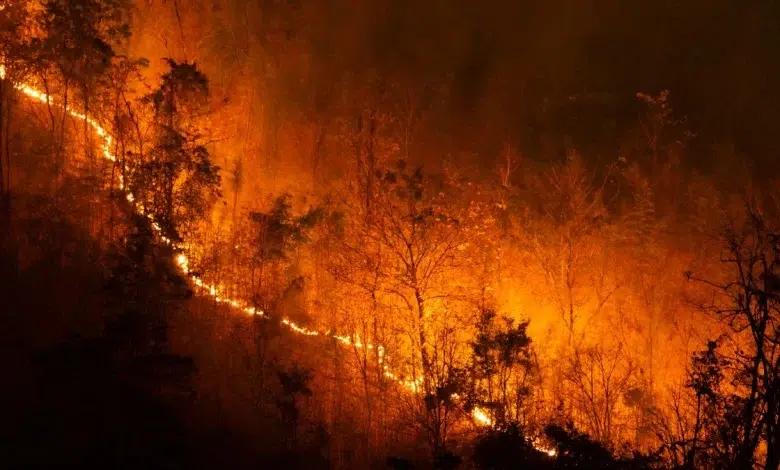Inside South Africa’s Plan to Address the Worldwide Wildfire Emergency

Table of contents
- Understanding the Rising Wildfire Threat in South Africa
- Climate Change and Its Impact on Wildfire Danger
- South Africa’s Paradigm Shift: From Reactive to Proactive Fire Management
- National and Provincial Government Initiatives
- Community Involvement and Public Awareness Campaigns
- Emergency Response and Evacuation Policies
- Challenges: Water Scarcity and Urban Interface Risks
- Strengthening Wildfire Resilience
Understanding the Rising Wildfire Threat in South Africa
South Africa, like many parts of the world, is confronting an escalating wildfire emergency driven by climate change. The frequency and intensity of wildfires have sharply increased, with the Western Cape, Eastern Cape, and Free State provinces particularly vulnerable due to dry conditions, stronger winds, and accumulating combustible vegetation fueled by rising temperatures. In 2024, wildfire incidents nearly doubled from the prior year, underscoring the urgent need for nationwide preparedness and response efforts.
ALSO READ: SA Pushes Climate Priorities at G20 Environment Summit
Climate Change and Its Impact on Wildfire Danger
Climate change plays a central role in increasing wildfire risks. South Africa faces:
- Extended dry spells and lower rainfall during fire seasons
- Higher surface temperatures causing vegetation to dry out faster (increasing inflammable fuel)
- More frequent lightning storms triggering natural ignitions
- Increased invasive plant species that add to combustible biomass
- Erratic wind patterns that can spread fires rapidly across landscapes
These factors combine to create more days each year when fire danger indexes reach critically high levels, threatening ecosystems, human settlements, and infrastructure.
South Africa’s Paradigm Shift: From Reactive to Proactive Fire Management
South Africa’s government recognises that traditional firefighting; largely reactive and focused on extinguishing fires; is insufficient to address the escalating crisis. The country is adopting a proactive, integrated fire management (IFM) approach designed to manage wildfire risks at the biome scale.
Key elements of the IFM strategy include:
- Controlled or prescribed burns to reduce excess combustible material in vulnerable ecosystems like the fynbos
- Advanced fire detection using drones, infrared cameras, and satellite technology to catch fires early
- Improved fire risk forecasting and early warning systems at the national level, helping communities and authorities prepare in advance
- Building capacity among local fire management teams and volunteer firefighters across provinces
National and Provincial Government Initiatives
The South African government, supported by partners such as the United Nations Development Programme (UNDP) and the Global Environment Facility (GEF), has launched wildfire risk reduction projects. These aim to lessen environmental, social, and economic vulnerabilities through:
- Establishing a nationwide hazard risk system for real-time fire warnings
- Training local communities, fire crews, and municipal officials in integrated fire management techniques
- Enhancing cooperation between insurance industries and government to support fire risk reduction
- Disseminating best practices for adaptive fire risk management across regions
The Western Cape, Eastern Cape, and Free State provinces form the initial focus area where more than 150,000 square kilometers are targeted for fire risk reduction activities.
Community Involvement and Public Awareness Campaigns
Community engagement is central to South Africa’s wildfire strategy. The government and organisations like Working on Fire conduct campaigns to:
- Educate residents about fire risks and safe prevention practices
- Train volunteer firefighters drawn from local populations
- Promote evacuation preparedness, including household evacuation plans and “go bags” with essentials
- Encourage clearing of combustible materials around homes and compliance with controlled burn regulations
Effective wildfire emergency management increasingly depends on empowered, informed communities playing active roles in both prevention and response.
Emergency Response and Evacuation Policies
When a wildfire breaks out, South Africa follows a structured emergency response protocol:
- Rapid initial attack by the closest fire station with support from neighbouring stations
- Utilisation of aerial firefighting resources during peak fire seasons to contain fires early
- Declaration of ‘extended attacks’ for fires that are not controlled within the first hour, triggering wider resource mobilisation
- ‘Mop-up’ operations continue for up to 24 hours post-fire to extinguish hot spots and prevent re-ignition
- Evacuations occur under the guidance of Incident Commanders, with mandatory or precautionary evacuation notices as needed
The safety of residents is paramount, with self-evacuation encouraged if danger is apparent before official orders.
Challenges: Water Scarcity and Urban Interface Risks
Water shortages compound firefighting challenges during prolonged dry seasons. Households and local authorities are encouraged to develop emergency water supplies through rainwater harvesting, boreholes, or backups powered by solar or generators.
Urban areas bordering natural landscapes, termed the wildland-urban interface, face unique vulnerabilities. Homes built with timber or thatch and surrounded by dense vegetation ignite more easily. Even brick homes can catch fire if embers land on combustible debris nearby. The government promotes firebreak creation, cleared strips free of flammable material, to serve as barriers.
Discover how this ambitious initiative plans to restore ecosystems, combat climate change, and inspire community involvement across South Africa. One Million Trees: New Campaign Aims to Boost Reforestation and Tackle Climate Change. Click to learn more.
Strengthening Wildfire Resilience
South Africa’s ongoing wildfire emergency management improvements hinge on:
- Continued investments in cutting-edge fire detection and early warning technologies
- Expanding integrated fire management capacity in all fire-prone regions
- Enhancing cross-sector collaboration between government, communities, and industry
- Scaling up education and public outreach programmes to bolster community resilience
- Supporting research and data collection to inform adaptive strategies amid evolving climate conditions
By shifting to a preventative mindset and fostering local ownership of fire risk, South Africa aims to reduce the devastation caused by wildfires and protect both natural biodiversity and urban populations.



